
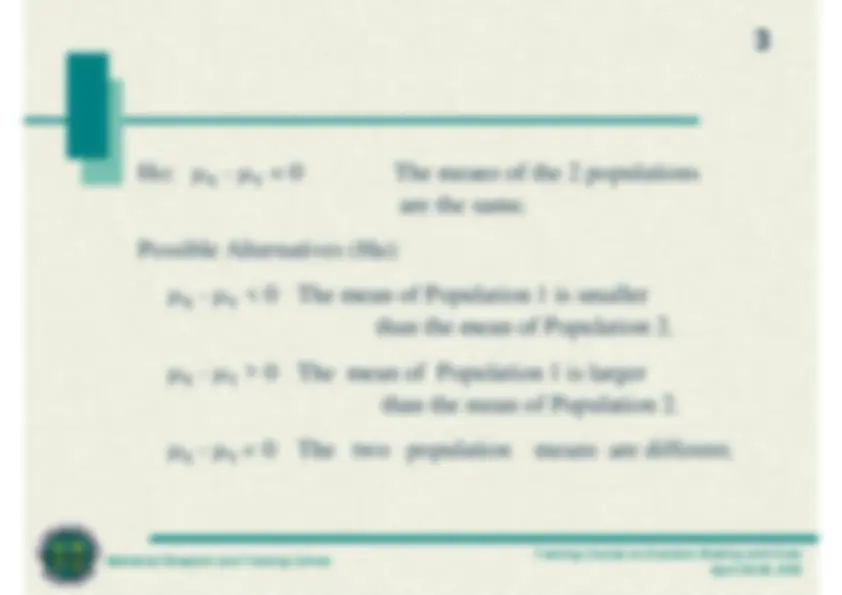
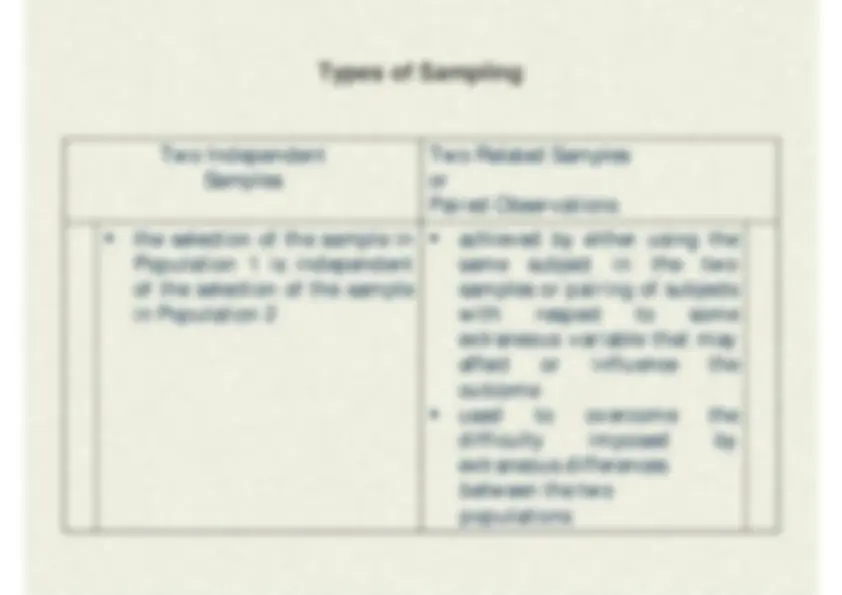
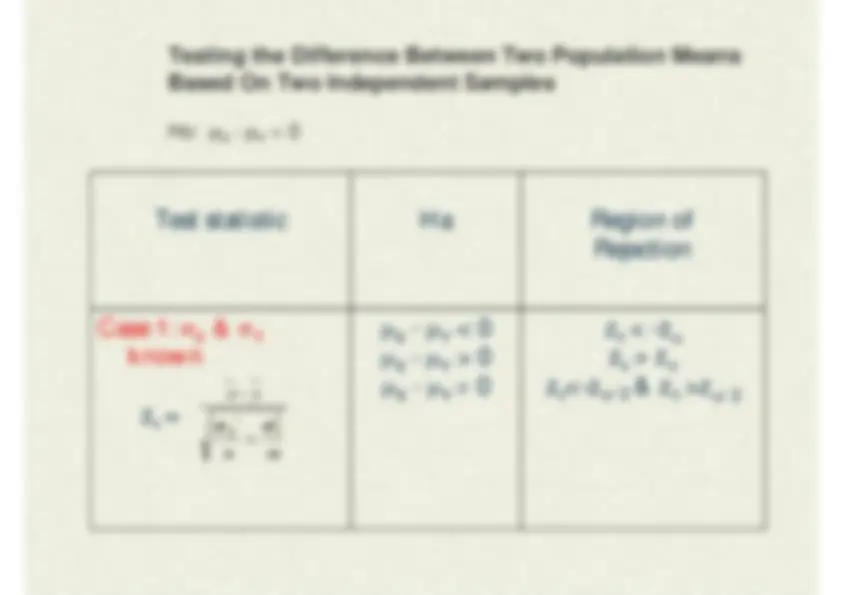
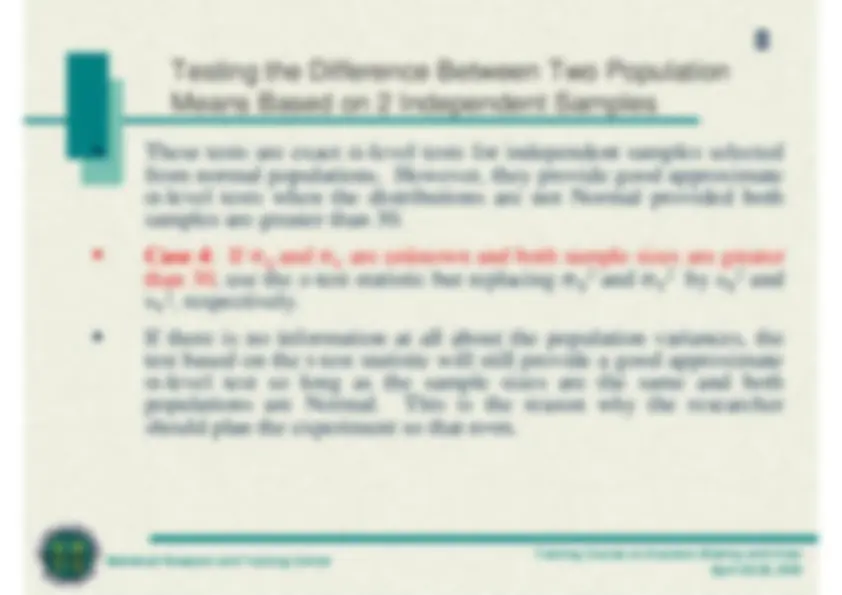
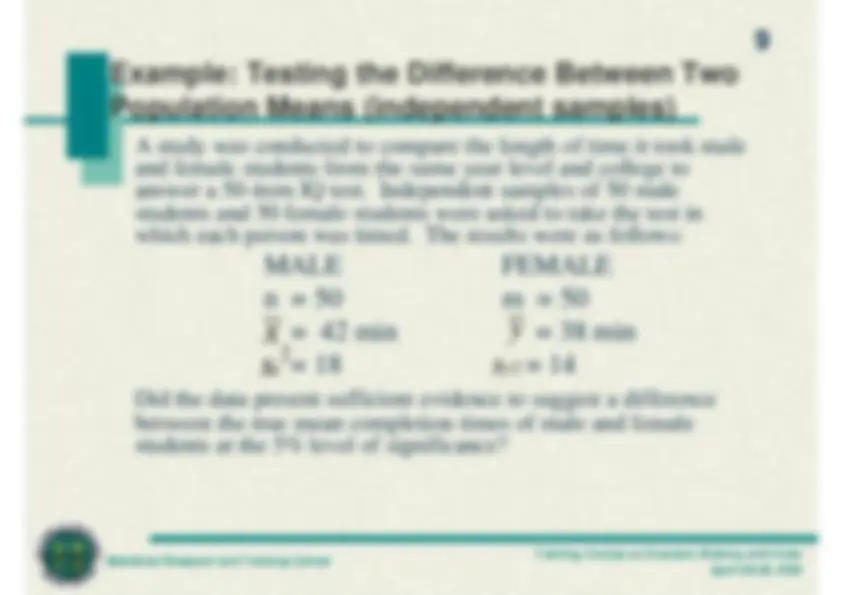
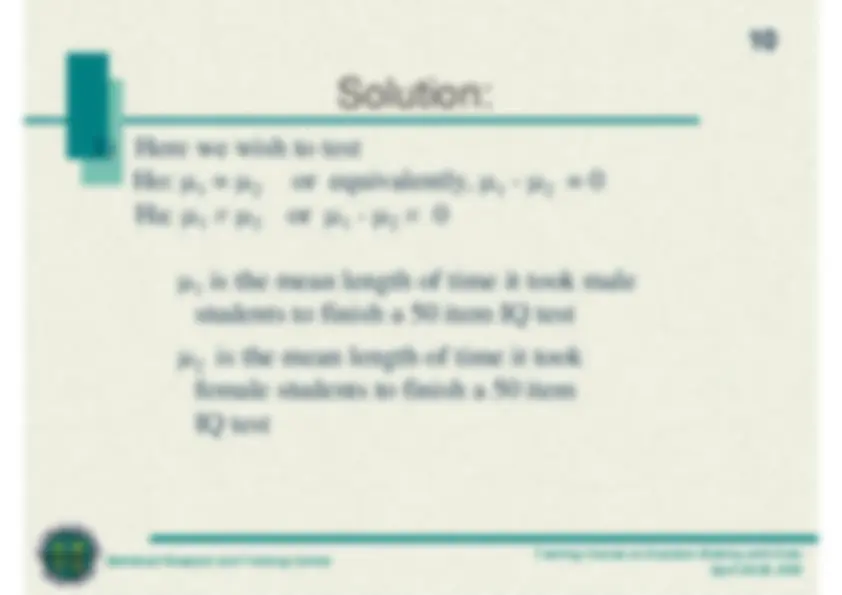
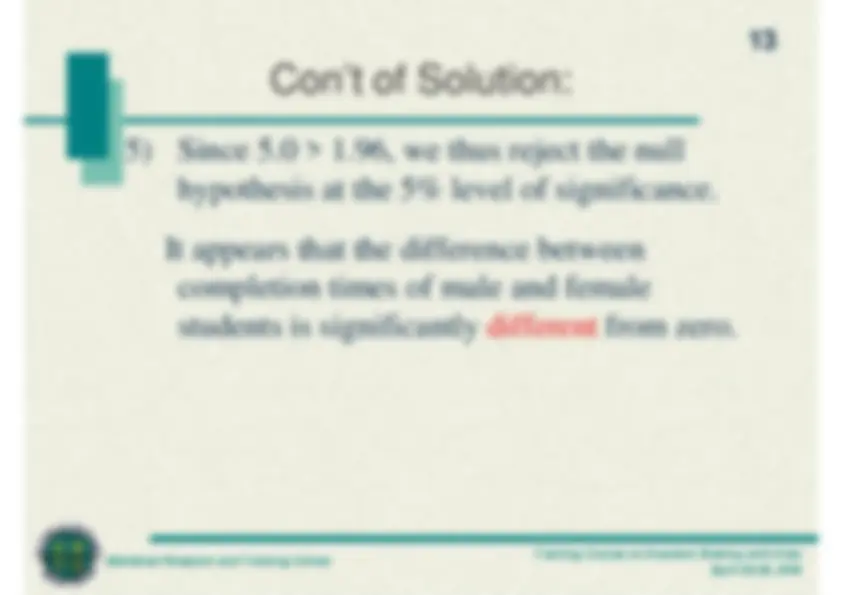
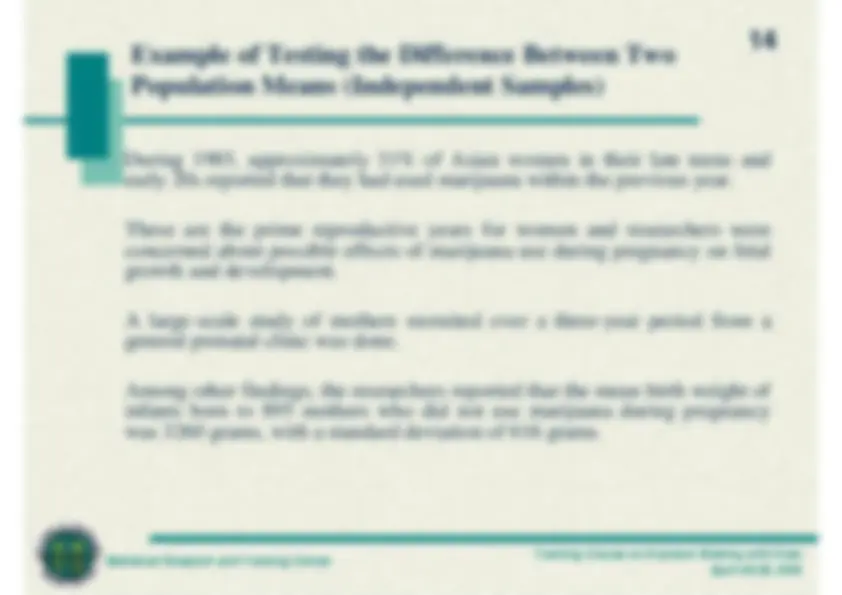
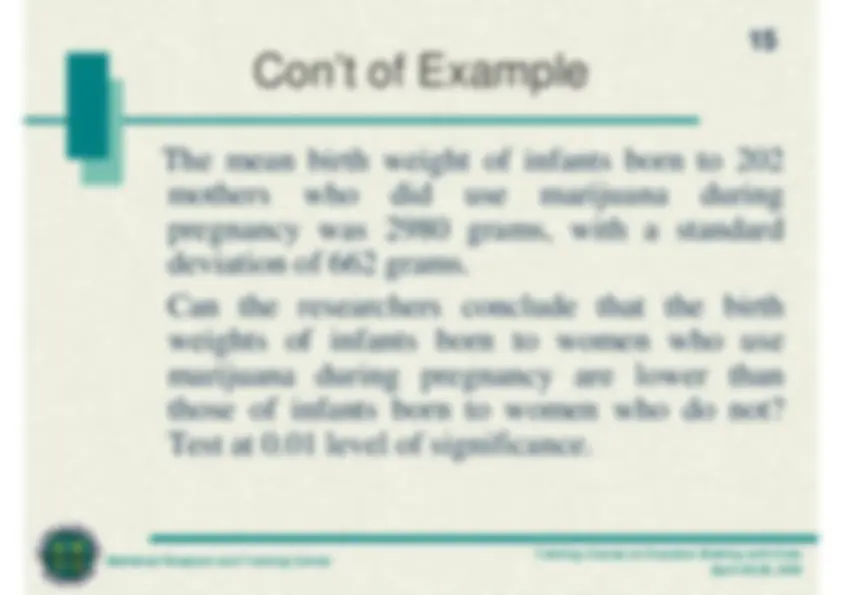
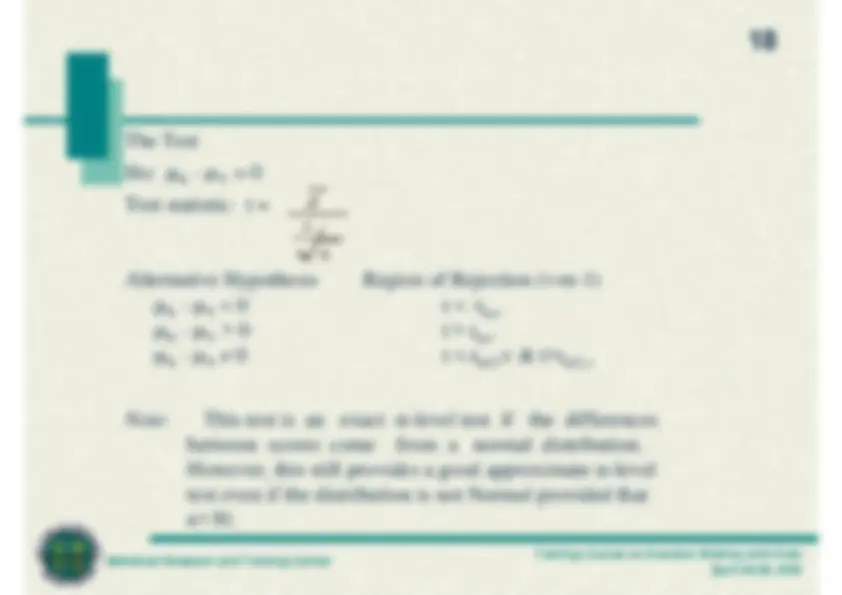
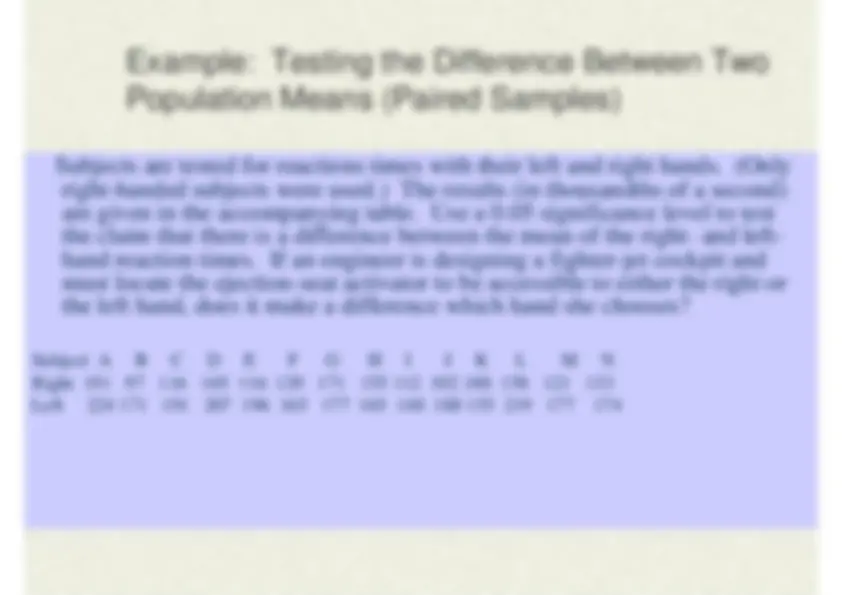
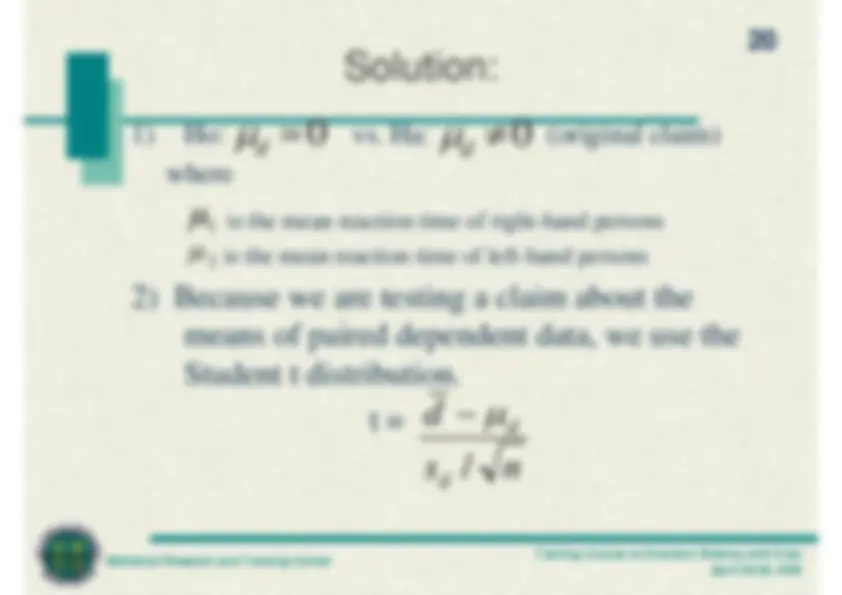
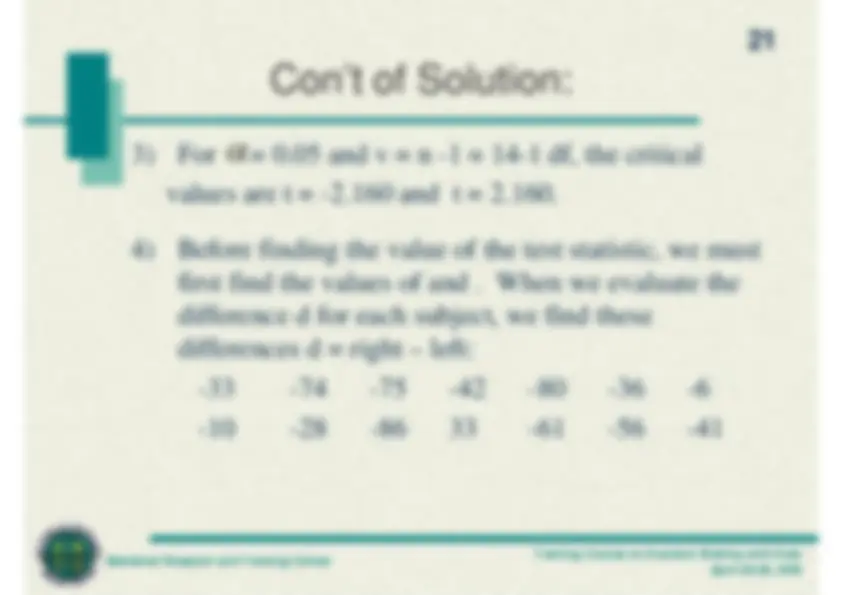
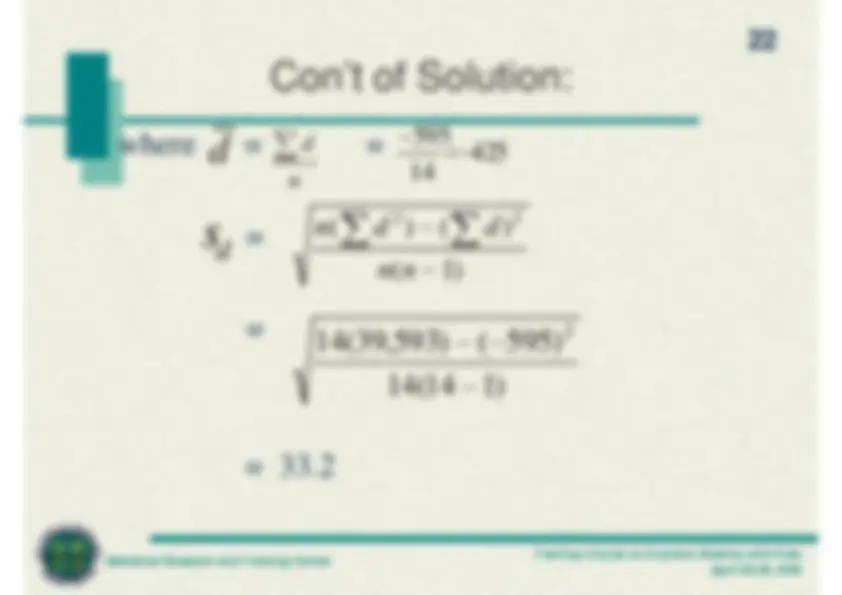
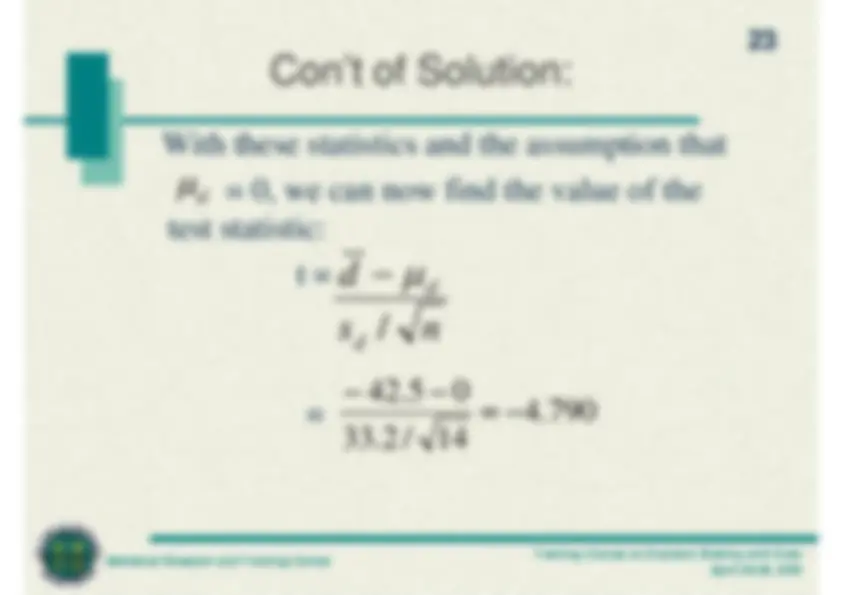

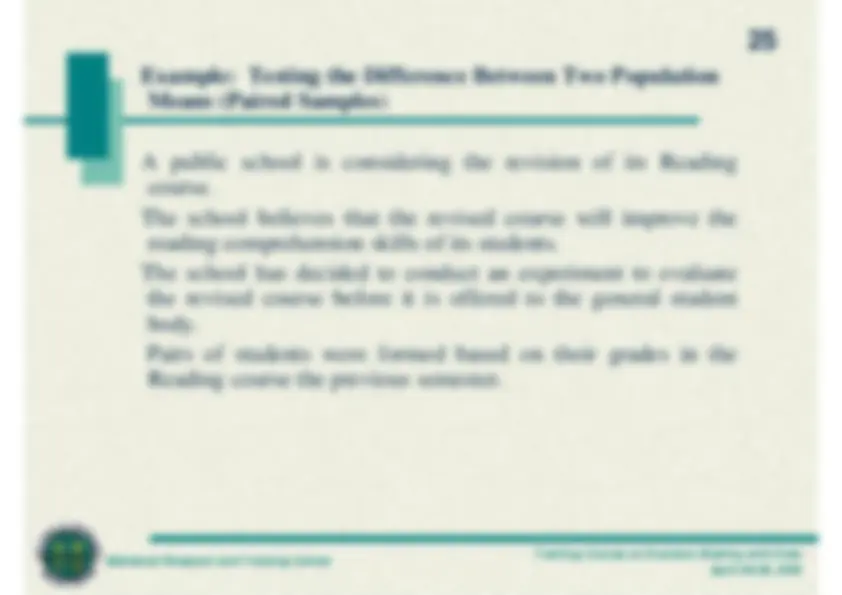
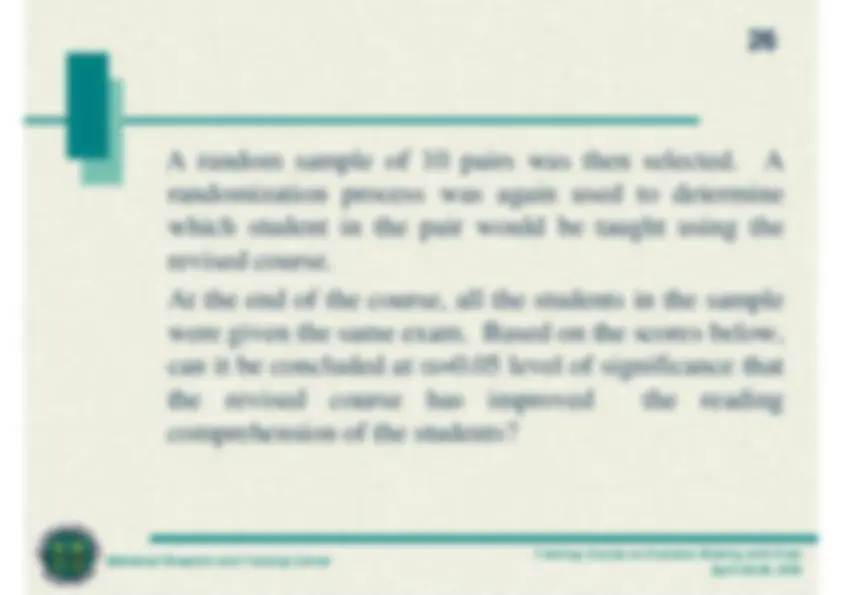
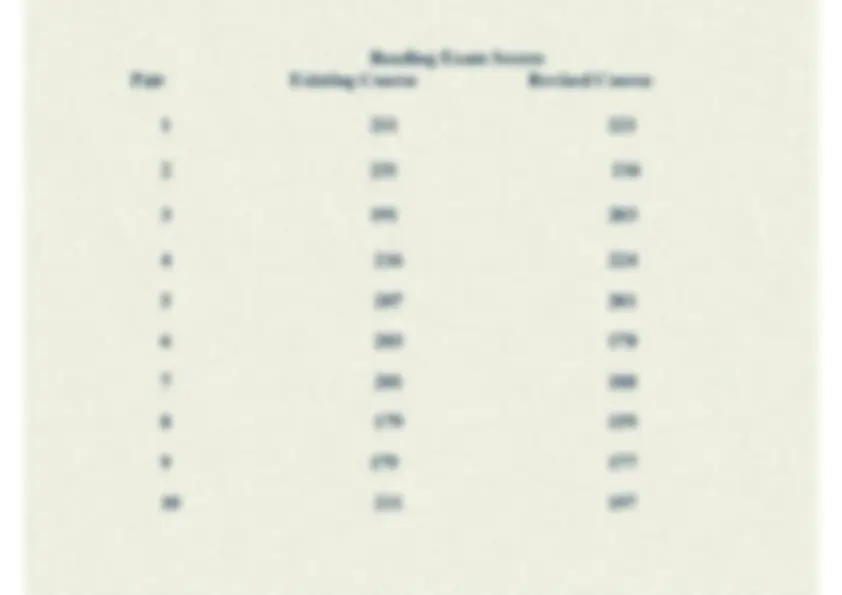
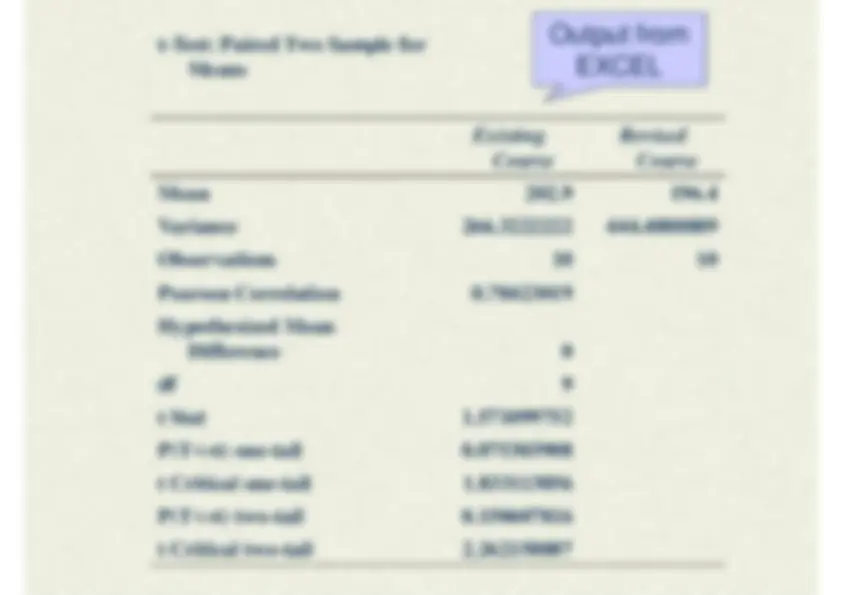
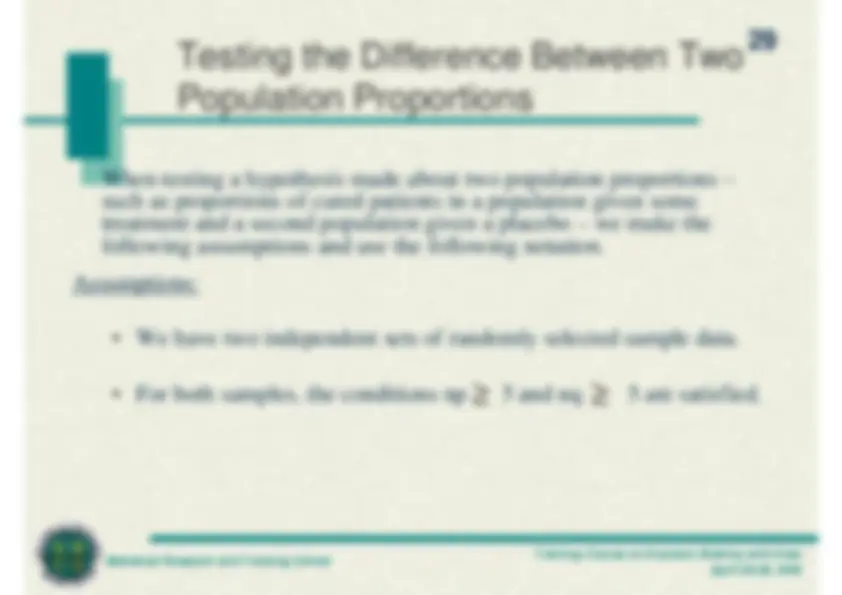
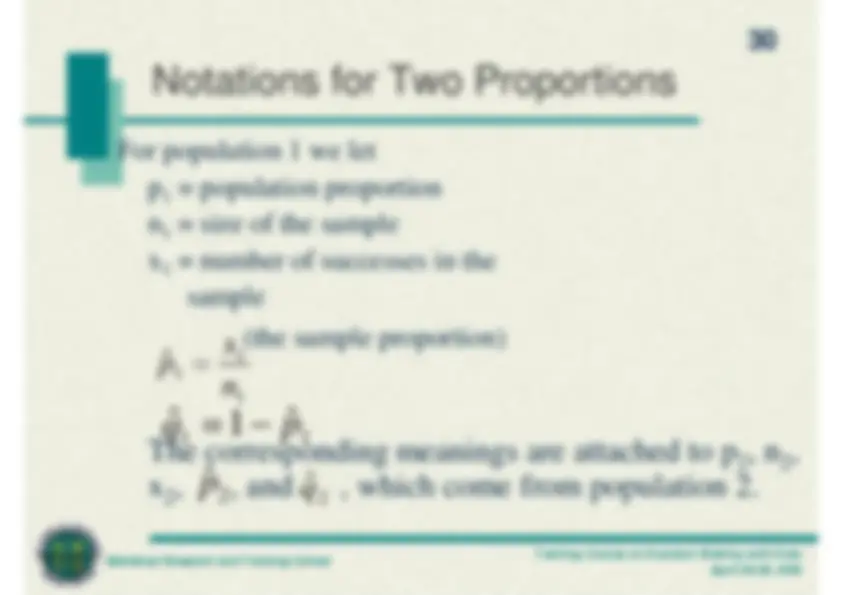
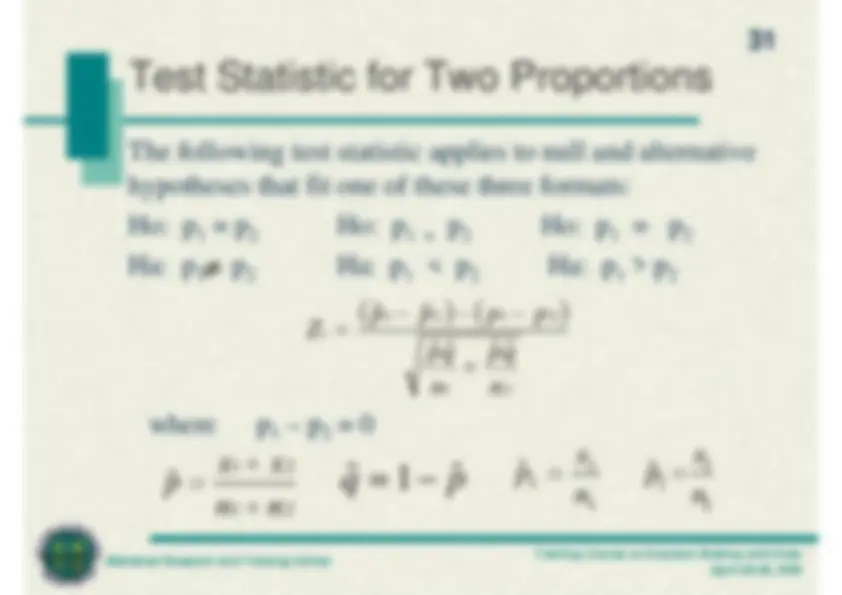
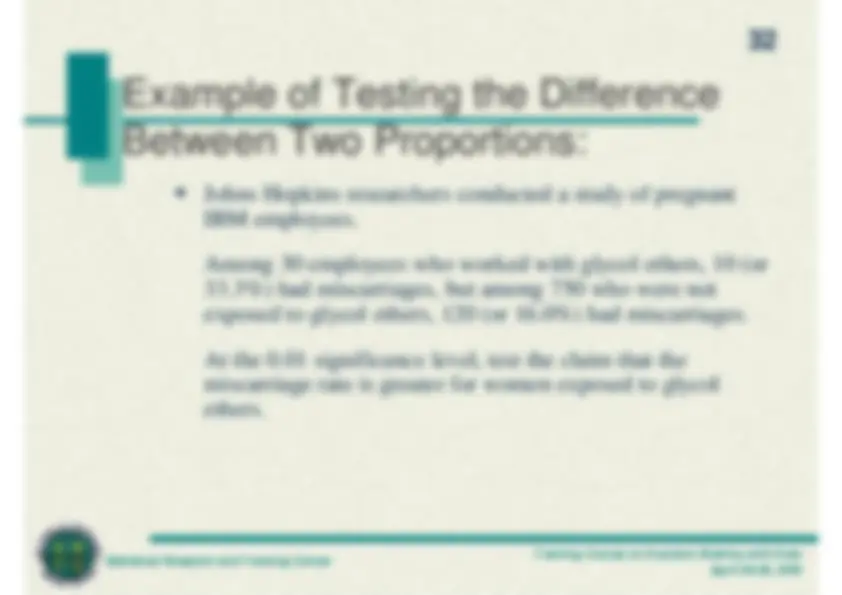
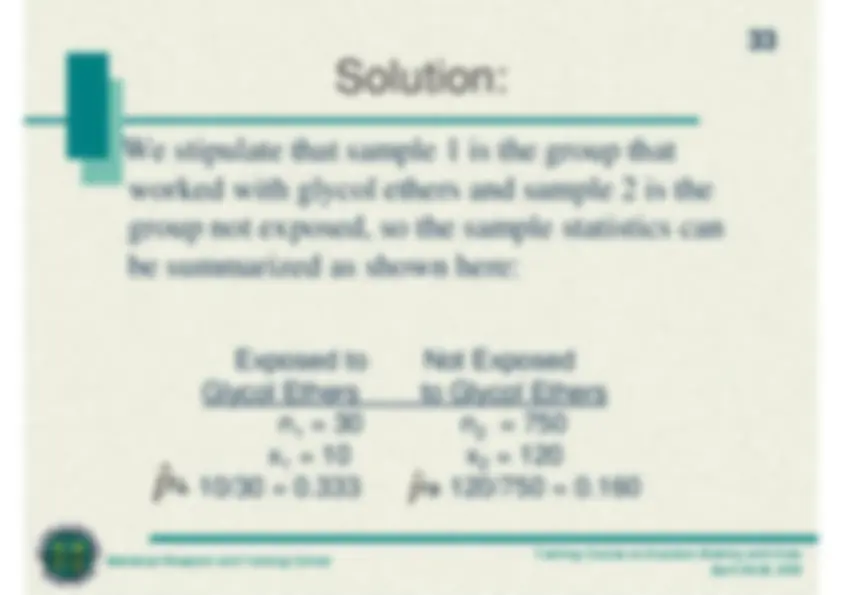
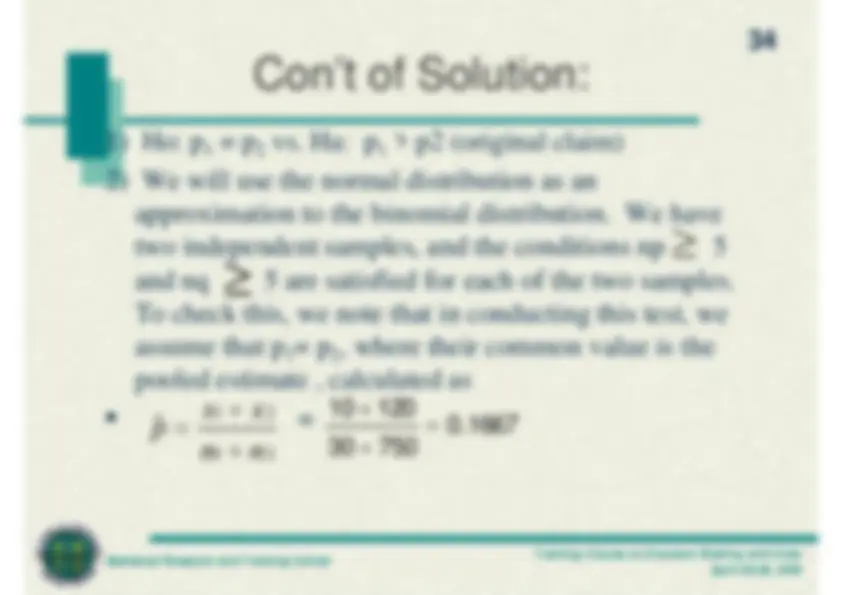
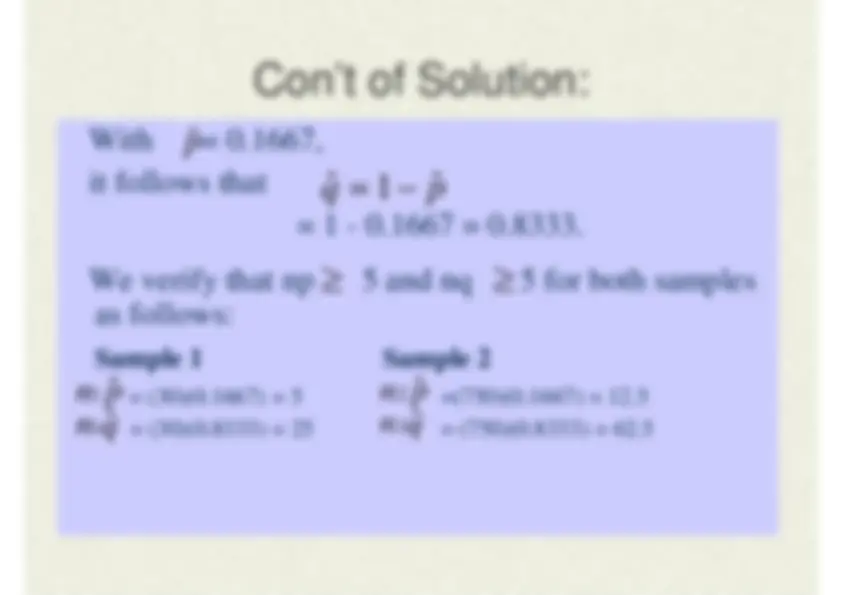
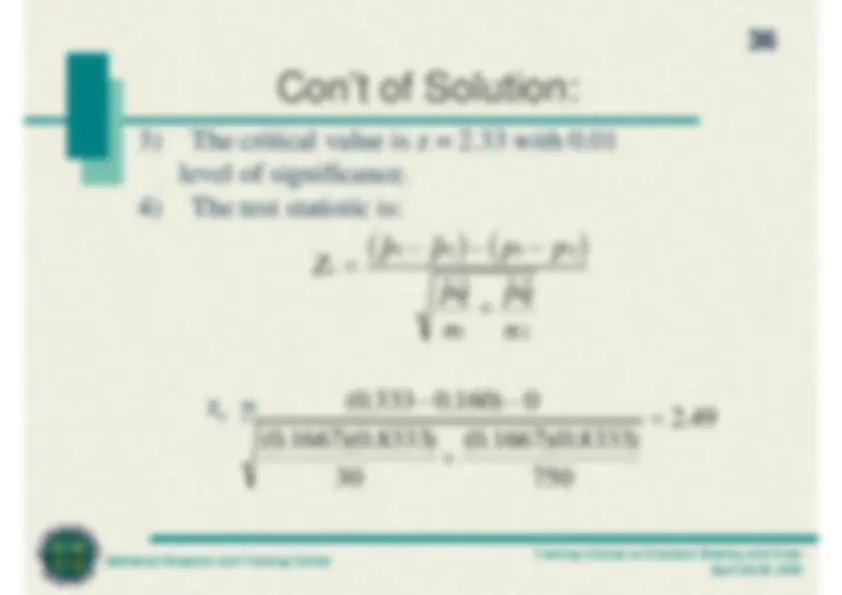

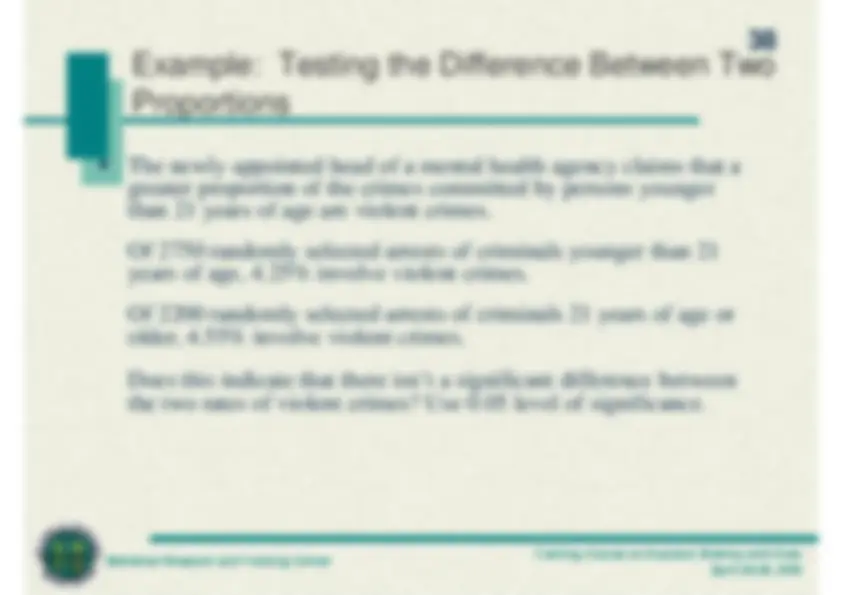
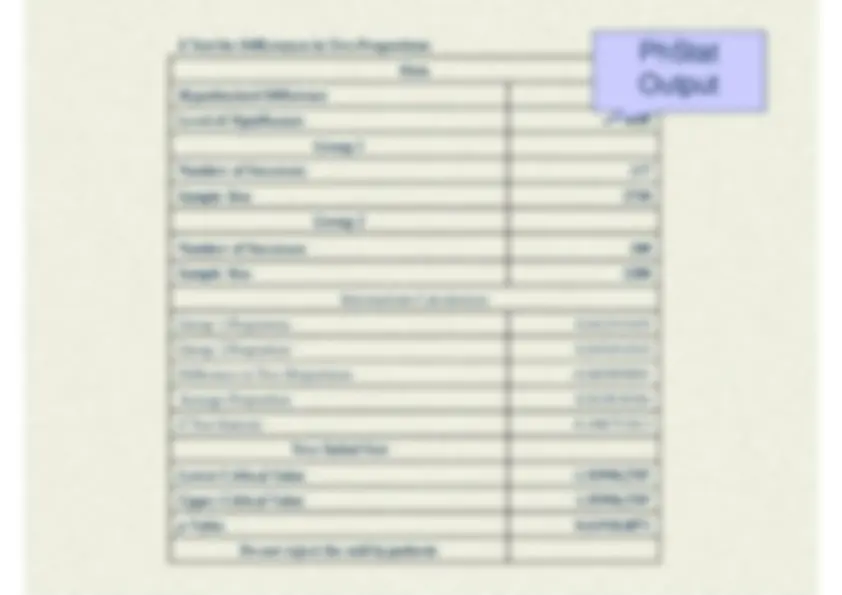
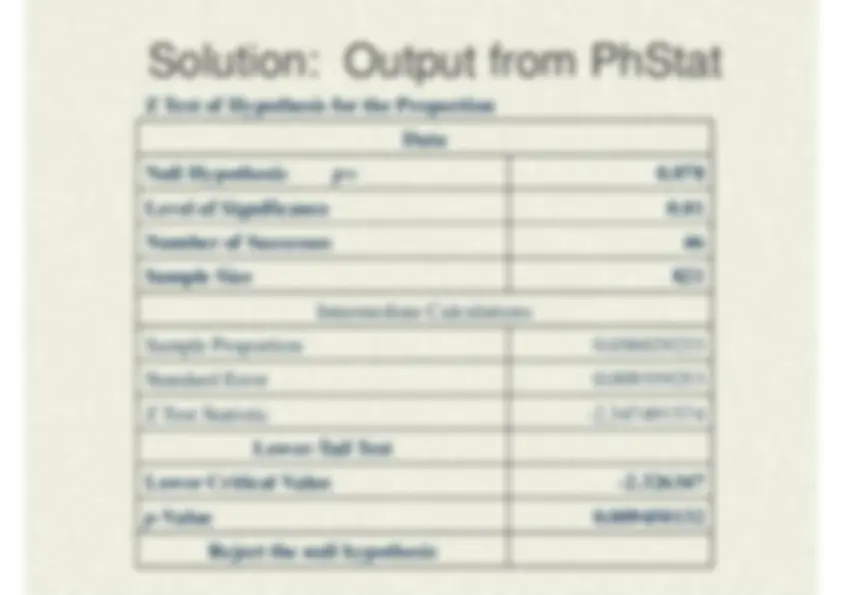


Study with the several resources on Docsity

Earn points by helping other students or get them with a premium plan


Prepare for your exams
Study with the several resources on Docsity

Earn points to download
Earn points by helping other students or get them with a premium plan
Community
Ask the community for help and clear up your study doubts
Discover the best universities in your country according to Docsity users
Free resources
Download our free guides on studying techniques, anxiety management strategies, and thesis advice from Docsity tutors
A comprehensive training course on decision making with data, focusing on testing the difference between two population means based on two independent samples. The course covers the calculation of test statistics, the interpretation of critical regions, and the rejection or acceptance of the null hypothesis. Examples and solutions for various scenarios, such as testing the difference between the mean length of time it took male and female students to finish an iq test, and testing the difference in mean birth weight of infants born to mothers who used marijuana during pregnancy. The course is designed for students who have a basic understanding of statistics and aims to equip them with the skills to make informed decisions based on data.
Typology: Study notes
1 / 40

This page cannot be seen from the preview
Don't miss anything!

































STATISTICAL RESEARCH AND TRAINING CENTER J and S Building, 104 Kalayaan Avenue, Diliman, Quezon City
Sample of Size n _ Sample mean = x Sample s.d.=sx Sample of Size m _ Sample mean = y Sample s.d.=sy
x Pop’n s.d .= X Pop’n mean=Y Pop’n s.d .= Y Population 1 Population 2 Set-up when testing the difference between two population means.
Types of Sampling Two Independent Samples Two Related Samples or Paired Observations the selection of the sample in Population 1 is independent of the selection of the sample in Population 2 achieved by either using the same subject in the two samples or pairing of subjects with respect to some extraneous variable that may affect or influence the outcome used to overcome the difficulty imposed by extraneous differences between the two populations
Ho: X - Y = 0 Test statistic Ha Region of Rejection Case 1: X & Y known zc = X
0 X
z zc<-z/2 & zc >z x y / n m X Y (^2 )
Case 3: X & Y unknown & unequal t c = X
0 X
t (,v) t c <- t (/2,v) & t c t (/2,v) where v = x y s n s m X Y (^2 ) s n s m s n n s m m X Y X Y 2 2 2 2 2 2 2 1 1
Statistical Research and Training Center Training Course on Decision Making with Data April 26-30, 2010
These tests are exact -level tests for independent samples selected from normal populations. However, they provide good approximate -level tests when the distributions are not Normal provided both samples are greater than 30. Case 4 : If X and Y are unknown and both sample sizes are greater than 30 , use the z-test statistic but replacing X 2 and Y 2 by sX 2 and sY 2 , respectively. If there is no information at all about the population variances, the test based on the t-test statistic will still provide a good approximate -level test so long as the sample sizes are the same and both populations are Normal. This is the reason why the researcher should plan the experiment so that n=m.
Statistical Research and Training Center Training Course on Decision Making with Data April 26-30, 2010 Solution:
Statistical Research and Training Center Training Course on Decision Making with Data April 26-30, 2010
x y c 2 2
Statistical Research and Training Center Training Course on Decision Making with Data April 26-30, 2010 Con’t of Solution:
Statistical Research and Training Center Training Course on Decision Making with Data April 26-30, 2010
During 1985 , approximately 31 % of Asian women in their late teens and early 20 s reported that they had used marijuana within the previous year. These are the prime reproductive years for women and researchers were concerned about possible effects of marijuana use during pregnancy on fetal growth and development. A large-scale study of mothers recruited over a three-year period from a general prenatal clinic was done. Among other findings, the researchers reported that the mean birth weight of infants born to 895 mothers who did not use marijuana during pregnancy was 3260 grams, with a standard deviation of 616 grams.
t Test for Differences in Two Means Data Hypothesized Difference 0 Level of Significance 0. Population 1 Sample Sample Size 895 Sample Mean 3260 Sample Standard Deviation 616 Population 2 Sample Sample Size 202 Sample Mean 2980 Sample Standard Deviation 662 Intermediate Calculations Population 1 Sample Degrees of Freedom 894 Population 2 Sample Degrees of Freedom 201 Total Degrees of Freedom 1095 Pooled Variance 390247. Difference in Sample Means 280 t - Test Statistic 5. Lower-Tail Test Lower Critical Value - 2. p - Value 1 Do not reject the null hypothesis
Statistical Research and Training Center Training Course on Decision Making with Data April 26-30, 2010 Testing the Difference Between two Population Means Based on two Related Samples
d
d sum of all the differences n sum of the squared differences nd n
2 1
Example: Testing the Difference Between Two Population Means (Paired Samples) Subjects are tested for reactions times with their left and right hands. (Only right-handed subjects were used.) The results (in thousandths of a second) are given in the accompanying table. Use a 0.05 significance level to test the claim that there is a difference between the mean of the right- and left- hand reaction times. If an engineer is designing a fighter-jet cockpit and must locate the ejection-seat activator to be accessible to either the right or the left hand, does it make a difference which hand she chooses? Subject A B C D E F G H I J K L M N Right 191 97 116 165 116 129 171 155 112 102 188 158 121 133 Left 224 171 191 207 196 165 177 165 140 188 155 219 177 174
Statistical Research and Training Center Training Course on Decision Making with Data April 26-30, 2010 Solution: